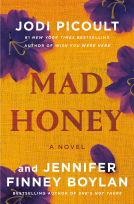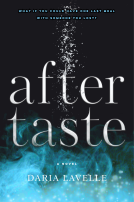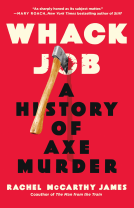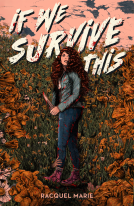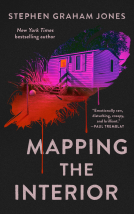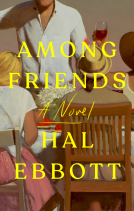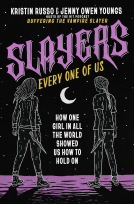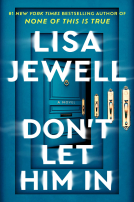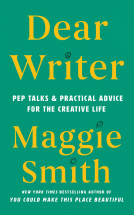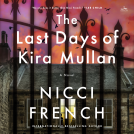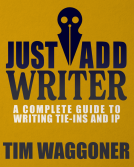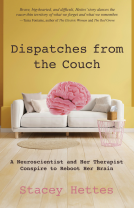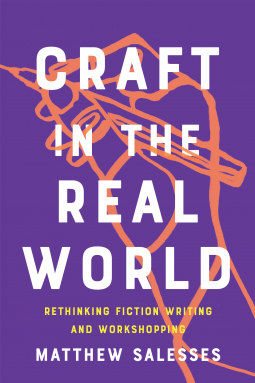
Craft in the Real World
Rethinking Fiction Writing and Workshopping
by Matthew Salesses
This title was previously available on NetGalley and is now archived.
Send NetGalley books directly to your Kindle or Kindle app
1
To read on a Kindle or Kindle app, please add kindle@netgalley.com as an approved email address to receive files in your Amazon account. Click here for step-by-step instructions.
2
Also find your Kindle email address within your Amazon account, and enter it here.
Pub Date Jan 19 2021 | Archive Date Jan 19 2021
Talking about this book? Use #CraftintheRealWorld #NetGalley. More hashtag tips!
Description
The traditional writing workshop was established with white male writers in mind; what we call craft is informed by their cultural values. In this bold and original examination of elements of writing--including plot, character, conflict, structure, and believability--and aspects of workshop--including the silenced writer and the imagined reader-- Matthew Salesses asks questions to invigorate these familiar concepts. He upends Western notions of how a story must progress. How can we rethink craft, and the teaching of it, to better reach writers with diverse backgrounds? How can we invite diverse storytelling traditions into literary spaces?
Drawing from examples including One Thousand and One Nights, Curious George, Ursula K. Le Guin's A Wizard of Earthsea, and the Asian American classic No-No Boy, Salesses asks us to reimagine craft and the workshop. In the pages of exercises included here, teachers will find suggestions for building syllabi, grading, and introducing new methods to the classroom; students will find revision and editing guidance, as well as a new lens for reading their work. Salesses shows that we need to interrogate the lack of diversity at the core of published fiction: how we teach and write it. After all, as he reminds us, "When we write fiction, we write the world."
Advance Praise
"A fresh view of teaching craft to writers of diverse backgrounds . . . An insightful guide for readers, writers, and instructors from all walks of life." —Kirkus Reviews
"This book is a gift to those writers who've felt the tilt of imbalanced power in a workshop, who've wondered whose rules they're following when they write and why, who've struggled to tell their stories within a narrow and restrictive tradition. With empathy and keen insight, Matthew Salesses delivers an unflinching critique of the pedagogy of creative writing's old guard—and models a way of studying and communicating craft that is self-aware, socially engaged, and thrillingly alive." —Alexandra Kleeman, author of Intimations
"This is exactly the book we need right now—a vital corrective to the myth that craft is a neutral, objective category unaffected by historical or cultural context. Matthew Salesses explores how beliefs about 'good' writing are profoundly marked by race, class, gender, sexuality, ability, and national identity; and he offers concrete strategies for liberating our classrooms and writing practices from the straight-white-male default gaze. I will recommend Craft in the Real World to every writer and teacher I know."—Leni Zumas, author of Red Clocks
"Craft in the Real World is an instant essential book. Every writer, every writing teacher, every critic, every reviewer, anyone interested in how language works needs to read this. Now."—Beth Nguyen, author of Stealing Buddha's Dinner
"Our students put their hearts on pages and they hand those pages to us. It's a profound act of trust and Matthew Salesses shows us how to be worthy of it. Craft in the Real World is required reading for writers, writing teachers, and everyone who loves language and what it can accomplish in our beautiful, complicated world."—Megan Stielstra, author of The Wrong Way to Save Your Life
"Astounding in its research and the case it makes for craft, Craft in the Real World asks writers and teachers of writing to claim our place as conscious participants in and makers of culture."—Tiphanie Yanique, author of Land of Love and Drowning
"Brilliant. Essential. This book will—and should—change creative writing workshops forever." —Joy Castro, author of Hell or High Water
"With Craft in the Real World, Matthew Salesses has created a tremendous resource for anyone hoping to write fiction or teach fiction writing. It tackles head-on how craft has often been taught in the United States, and like the best teachers, it provides a practical path for much needed reform and improvement. This book teaches us how to ask better questions of our craft, our work, our workshops, and of each other. To have all of this pedagogical brilliance and thoughtfulness in one book is a gift." —Jennine Capó Crucet, author of My Time Among the Whites
Available Editions
| EDITION | Other Format |
| ISBN | 9781948226806 |
| PRICE | $16.95 (USD) |
| PAGES | 256 |
Links
Featured Reviews
I loved this book! The author is a writing teacher and this book is his philosophy of what a meaningful writing workshop could be for writers who fall outside of the Hemingway demographic (white, straight, male, cis, affluent, able, etc.)
He articulates why I have typically found traditional workshopping a less than helpful experience and I want to be part of these new workshop structures! The book seems like its primary audience is writing teachers who lead craft workshops, but it has a broader appeal for anyone who writes and has questioned the "traditional" writing workshop structure.
Salesses explains in clear terms why the "traditional" structure works well for straight, white, cis, affluent, able, male (etc.) writers but often doesn't provide meaningful writing development opportunities for writers who fall outside that narrow "Hemingway"-esque demographic. Really upliftng and validating to read and realize that past workshop experiences which felt unhelpful at best (bullying at worst) might be chalked up to the structure of the workshop itself as being a space not created for me.
I received an ARC from NetGalley for an honest review.
 Reviewer 565686
Reviewer 565686
An essential text for all writers and instructors. Though the subtitle specifies this book is meant for fiction, I found it useful even as a nonfiction writer. I wish I'd had it years ago, when I started writing and workshopping.
I've long heard my favorite critics discuss evaluating a book according to its own goals and terms, but never quite understood what that meant. Salesses beautifully demystifies this question by pointing over and over again (without being redundant or pedantic) to the centrality of the INTENDED audience (vs. workshop audience). According to him, every craft decision comes down to this element, which makes so much sense that I'm shocked it's not more widely known and discussed. I also really appreciated his thoughtful discussion of what workshop should and can do, and what it absolutely shouldn't. I will be thinking about his advice in every workshop I'm in going forward.
Written in clear and accessible language, supplemented with loads of practical examples and exercises. Highly recommend.
 Reviewer 492564
Reviewer 492564
An utterly brilliant book that I am recommending to anyone who writes or teaches writing. Salesses unpacks the white, male history of the writing workshop and writing criticism, and uncovers how what is taught as "good writing" is just something that ticks the boxes these writers have made. By encouraging the use of different forms and approaches to writing, and with suggestions for changing the oppressive value structure present in writing and writing evaluation, he asks us all to rethink how we write and teach writing.
 Elle P, Librarian
Elle P, Librarian
Excellent and highly important. A recommened first purchase for nonfiction collections where craft and education books are popular and for high school professional collections.
 Lecy B, Reviewer
Lecy B, Reviewer
This really is like a workshop in a book, not only on writing but looking at craft as a big picture. Salesses included some ideas that stripped away what I thought I knew about writing fiction and I have so many highlights and notes from reading this book. It will probably be one that I reference many times in my writing practice. *Advance copy provided by the publisher in exchange for my honest review.
Two key pieces of advice stand out. The first is to push back, not simply against the standards but against the context that created them: “Workshop has created many axioms: ‘show, don’t tell,’ ‘write what you know,’ ‘kill your darlings,’ etc. Writers have pushed back against those axioms, but we must also push back against the context that creates them, that nurtures them and passes them on.” Such pushback is possible only if we first work toward a deeper and wider knowledge of different ways of telling stories. This entails not only understanding the conventions of various literary traditions but also which exceptions and experiments might have influenced or changed them.
The second piece of advice is about determining the readership we’re writing for. Here, Salesses introduces his critical concept of two kinds of readers and two kinds of writers. First, there’s the reader-self that knows the fiction they’re reading is made up, not real. Then, there’s the implied reader: the self that experiences fictional characters as real people which is the one a writer is generally writing for. There’s also the author who creates and the implied author as imagined from the text by the reader. The author’s craft choices are not only negotiations with the cultural expectations of the implied reader, but they also determine the worldview or orientation of the implied author, the one the real reader gets to know through the text.
(please see the review link for the full text)
 Sandra K, Reviewer
Sandra K, Reviewer
Although this book is quite dense, there is so much thought-provoking material provided that it is worth the effort. The conversation about the expectations of craft from a cultural perspective has made me rethink the way I approach any story, but especially stories written from the perspective of cultures other than mine. The author provides numerous examples both from a theoretical and practical approach to how discussions of craft are experienced by workshop attendees and taught by instructors. A great book for expanding your thoughts about craft and storytelling to be more culturally aware.
Readers who liked this book also liked:
Jodi Picoult; Jennifer Finney Boylan
General Fiction (Adult), Literary Fiction, Women's Fiction
Kristin Russo; Jenny Owen Youngs
Biographies & Memoirs, Humor & Satire, Nonfiction (Adult)
